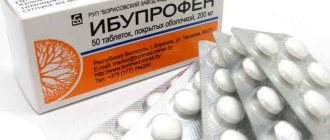Knee pain is a very annoying nuisance that, unfortunately, most people experience. They can be sharp, aching, burning, pulsating, limit joint mobility, and be present only during physical activity or even at rest. But many, instead of seeing a doctor, try to eliminate them with the help of painkillers, in particular ointments, gels or tablets of non-steroidal anti-inflammatory drugs. Such drugs, although they have anti-inflammatory properties, are not able to influence the pathogenesis of knee pain, and therefore only temporarily help eliminate them. Therefore, they can only be considered as a means of symptomatic therapy.
But the causes of discomfort in the knee joints can lie in the occurrence of a variety of disorders, both directly in the knee and in the spine or other parts of the body. Therefore, it is possible to develop effective treatment tactics that will truly help eliminate pain only after establishing the exact cause of its occurrence. To do this, you will need to undergo a number of diagnostic procedures and receive consultations from specialists, but this is the only way to truly improve your well-being and avoid the development of complications.
Symptoms
The main symptom of sciatica is severe pain, which is initially localized in the lumbar and sacral region, and as the disease progresses, it spreads along one, or less often, both lower extremities. The pain can be burning or dull, continuous or “shooting”, periodically occur in the form of attacks or be present all the time with variable intensity. The pain intensifies with movements of the spine, and in some cases, even a slight movement of the affected limb leads to a severe outbreak of pain.
In some patients, the pain is moderate, but tingling or numbness is felt in the limb or a certain area thereof. Some time after the onset of sciatica, individual muscle groups gradually weaken, which is why the patient has difficulty walking. In the most severe cases, nerve entrapment leads to problems with urination and defecation due to paralysis of the sphincter.
Are you experiencing symptoms of sciatica?
Only a doctor can accurately diagnose the disease. Don't delay your consultation - call
Symptoms of a pinched nerve in the knee joint
Typically, a pinched nerve in the knee produces symptoms in the form of stabbing, sharp pain at the site of compression. This is the primary sign. if the pinching was caused by an external influence (for example, a sitting position with a leg crossed over the leg), then after removing the pressure all symptoms disappear without a trace within 15 to 30 minutes. if compression is caused by internal pathological processes, then the pain gradually turns into a feeling of persistent numbness. A feeling of “chill” may run through the skin of the lower leg. The skin becomes pale and cold to the touch.
If the pinched knee nerve is not eliminated at this stage, the symptoms will develop:
- numbness of the lower leg appears;
- when walking, your gait will change, since the work of certain muscle groups will be disrupted;
- swelling in the ankle joint will begin to increase;
- there will be a risk of developing serious lymphedema.
Long-term symptoms of a pinched nerve in the knee joint are triggered by the consequences of fiber atrophy. Innervation suffers, and the functioning of blood and lymphatic vessels is disrupted, muscle tissue degeneration occurs, and skin sensitivity is absent or greatly reduced. Treatment of a pinched patellar nerve in the later stages requires patience from the doctor and the patient. This process can take several months and does not always lead to a 100% positive result. Therefore, do not ignore the early symptoms of pathology. Seek medical attention at the first sign of nerve compression.
Causes of the disease
All diseases and conditions that cause sciatica are divided into two groups:
- vertebrogenic, i.e. associated with injuries and diseases of the spine - this includes osteochondrosis, injuries and deformations of the vertebrae or intervertebral discs, spondylosis, stenosis of the lumbosacral region;
- non-vertebral, i.e. not associated with the spine, are infectious inflammation of the genitourinary system or muscle tissue, hypothermia, excessive physical exertion on the muscular corset of the lower back and pelvic region, a sedentary lifestyle, excess weight, pregnancy, tumor development, etc.
Any compression of the sciatic nerve leads to the development of the disease. The most common cause is a herniated intervertebral disc, a ring of fibrous tissue that separates the vertebrae.
The main causes of tibial nerve neuropathy
Let's consider the main situations that provoke such a problem as tibial nerve neuropathy:
- severe injuries - a broken leg, a dislocated ankle joint, problems with the functioning of the tendon, sprained foot ligaments;
- repeated injuries received during sports training, foot deformation, one of the forms of which is flat feet;
- incorrect position of the lower leg and foot for a long time with strong compression (pinching of the tibial nerve);
- impaired metabolism;
- diseases of the knee and ankle joint.
Diagnostics
The primary diagnosis of sciatica begins with an examination by a neurologist, who, during a conversation, clarifies the nature and location of the pain, its frequency and duration. The doctor will then check for some sciatica symptoms:
- asks the patient to bend and straighten his leg - pain should appear in the popliteal fossa;
- asks to bend the straight leg at the hip joint, and then at the knee - pain in the lower back and hip first appears, then disappears.
To clarify the prevalence of the inflammatory process, instrumental diagnostic methods are used:
- X-ray of the lumbar region to check for the presence of spondylosis and filter out a number of other diseases as the cause of pain;
- Ultrasound to detect inflammation, injury or tumor in soft tissues;
- MRI, which allows you to detect abnormalities in the bone structure and soft tissues;
- electroneuromyography to check the condition of nerve fibers (prescribed for sensitivity disorders).
In many patients, at the beginning of the disease, the pain is not too severe and is short-term, so people are in no hurry to seek medical help. However, the signals that your body gives should in no case be neglected, because the earlier treatment is started, the less complex and lengthy it will be.
Diagnosis and treatment of tibial nerve neuropathy
To diagnose the disease, you should first consult a neurologist. With the help of a detailed examination, a specialist will be able to determine the degree of damage to the tibial nerve. A neurologist will make an accurate diagnosis by examining all muscle groups in the lower leg and foot. Electromyography and electroneurography are also used. Ultrasound examination is also effective for diagnostic purposes. The specialist may prescribe x-rays of the damaged areas.
Treatment is carried out in a variety of ways. They use orthopedic shoes, all kinds of therapeutic blockades with various medications. Of course, it is necessary to use drugs that improve metabolism and blood flow to the tibial nerve. In severe situations, anticonvulsants and anti-stress medications are prescribed. Ultraphonophoresis, magnetic therapy, electrophoresis are highly effective. Muscle-restoring procedures – massage and exercise therapy. In some cases, surgery is prescribed for pinched tibial nerve.
Therapy
The greatest discomfort for the patient, as a rule, is caused by a pain symptom, and treatment of sciatica is aimed not only at eliminating the cause that caused its occurrence, but also at relieving pain. For this, the neurologist prescribes:
- non-steroidal anti-inflammatory drugs that relieve inflammation and reduce pain;
- antispasmodics and muscle relaxants to eliminate muscle spasms leading to compression of nerve tissue;
- analgesics to reduce pain;
- glucocorticosteroids to reduce inflammation and relieve pain;
- vitamins to strengthen the function of nerve fibers and improve the conduction of nerve impulses.
In addition to drug treatment, physiotherapeutic procedures for sciatica have a positive effect on health:
- electrophoresis - the effect of a weak electric current and a drug on the skin in the area of inflammation;
- UHF – exposure to weak currents of ultrasonic frequency, which has a warming and stimulating effect;
- laser beam therapy, which has a stimulating and analgesic effect;
- magnetic therapy to relieve pain in the affected area, reduce tissue swelling, and relieve inflammation;
- massotherapy;
- manual therapy;
- acupuncture (acupuncture).
Patients with acute pain require bed rest to avoid further irritation of nerve fibers and increased inflammation.
During the period of remission, special physical exercises are of great benefit; for sciatica, they are prescribed to stimulate metabolic processes in weakened muscles, improve blood circulation and strengthen muscle tissue.
Surgical intervention to treat sciatica is used in extremely rare cases:
- upon detection of a benign or operable malignant tumor;
- if severe pain does not decrease after one and a half months of active therapy;
- with serious dysfunction of the pelvic organs.
If you consult a doctor in a timely manner, the prognosis is usually favorable, and the patient will be free from pain for a long time or completely.
What diagnostic methods are used for neuritis of the peroneal nerve?
After an examination and identification of characteristic symptoms, the doctor may prescribe you an electroneuromyography - a study during which, using special electrodes connected to a device, you can evaluate the nature and strength of nerve impulses and check how the lower leg muscles respond to them. This helps confirm damage to the peroneal nerve and identify at what level the neuritis occurred.
You may also be prescribed a biochemical blood test and other laboratory tests if the doctor suspects that the symptoms of peroneal nerve neuritis are caused by diabetes mellitus or infections.
In some doubtful cases, they resort to radiography, CT, MRI and other studies.
The international clinic Medica24 employs professional doctors and has installed new modern diagnostic equipment. Here they will accurately identify the cause of your symptoms, establish a reliable diagnosis, and prescribe the correct treatment. Contact us at any time of the day by phone.
The material was prepared by Natalya Yurievna, a neurologist at the international clinic Medica24, Candidate of Medical Sciences Lasch.
Preventing knee pain
Risk factors are excess weight, physical inactivity or excessive stress on the knee joints, frequent injuries, and a hereditary predisposition to joint diseases. Following a healthy lifestyle will help keep your knee joints healthy. This concept includes:
- maintaining normal weight;
- optimal level of physical activity, including strength and aerobic training;
- balanced diet;
- good sleep;
- hardening;
- avoiding traumatic situations and overwork;
- increasing stress resistance;
- periodic monitoring of blood composition and taking measures to eliminate identified deficiencies of essential vitamins and minerals.
To prevent loss of ability to work and the development of dangerous life-threatening complications, you must consult a doctor at the first sign of discomfort or pain in the popliteal area.
Anatomy of the knee meniscus
The knee meniscus is a flat, crescent-shaped cartilage located in the cavity of the knee joint between the femur and tibia. There are two menisci in each knee: lateral (outer, that is, located closer to the edge) and medial (internal, located closer to the middle). Between the menisci there are cruciate ligaments, which can also be damaged during injury.
The function that the menisci perform is to smooth the articular surface inside the knee, improving the fit of the cartilage of both bones to each other. Without the meniscus, the knee joint cannot function fully.









